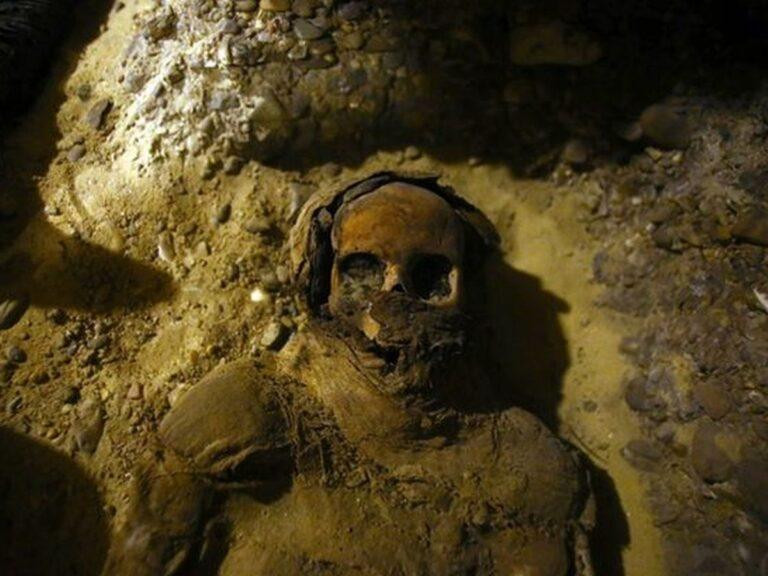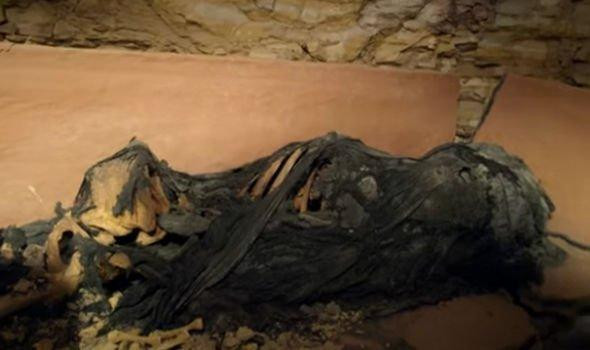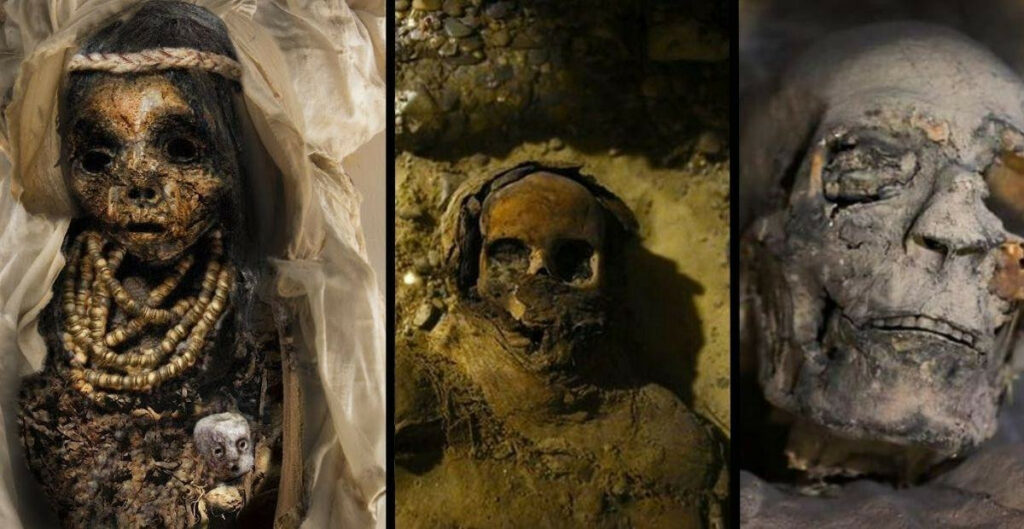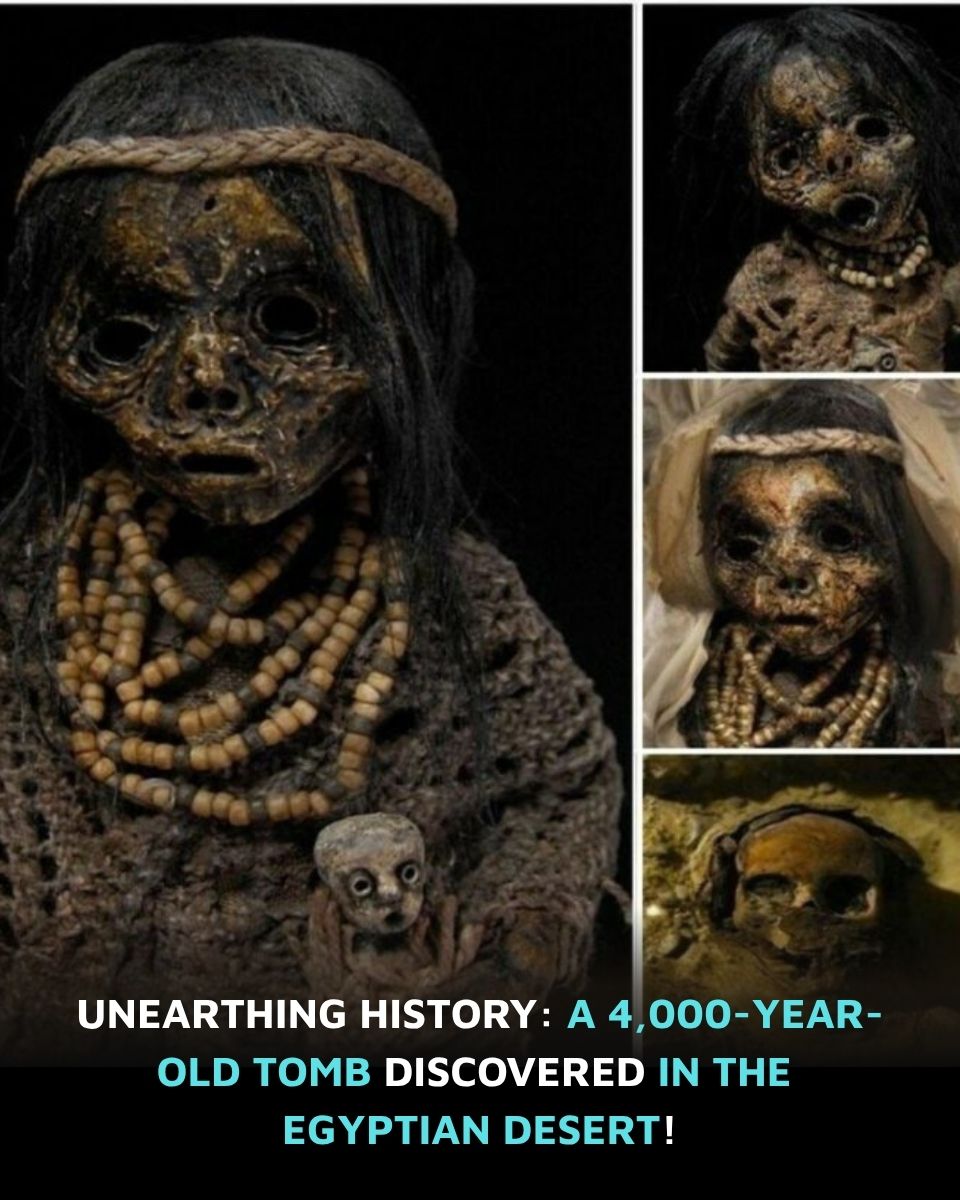Archaeological teams working in Egypt continue to bring forward discoveries that reshape our understanding of life in the ancient world. One recent finding, documented by an international research collaboration, involves a 4,000-year-old tomb uncovered at the edge of the desert landscape near the cliffs traditionally associated with the Valley of the Kings. The excavation, led by a Spanish research group studying the era of Queen Hatshepsut, revealed a sealed terracotta coffin that had remained untouched since antiquity.
The discovery gained attention not because of dramatic treasure, but because of the remarkable level of preservation and the insight it provides into burial customs, aging, and social identity during Egypt’s Middle Kingdom. With careful documentation and slow, methodical excavation, the team approached the burial with the aim of preserving every clue that could help reconstruct the life of the person interred inside.
Their efforts were recorded as part of Channel 4’s Secrets of Egypt’s Valley of the Kings, highlighting the challenges that archaeologists often face while working in harsh desert conditions, where shifting sands, heat, and delicate structures require expert handling at every stage.
Navigating Harsh Terrain and Fragile History

The location of the tomb posed the first of many challenges. Winds sweeping across the desert carried sand that reduced visibility and made the climb to the burial site more difficult. The excavation team worked against time and weather, taking precautions to protect both themselves and the site.
Despite the unpredictable conditions, archaeologists remained focused on the careful approach required when dealing with structures that have stood for thousands of years. Their slow progress allowed them to document architectural features and surface markings that might otherwise have been lost. These details add valuable context to discussions about the era’s funerary practices and social organization.
As they advanced deeper into the cliffside structure, the team encountered evidence suggesting that the tomb had remained sealed for millennia. Such undisturbed spaces are rare, offering an opportunity to observe artifacts and remains positioned almost exactly as they were placed during burial.
The Sealed Terracotta Coffin

Inside the chamber, the researchers encountered a terracotta coffin whose preservation astonished the team. The surface retained clear craftsmanship details, and the sealed edges indicated that it had not been opened in the intervening centuries.
Lifting the coffin lid required careful coordination. Ancient terracotta is fragile, and any misstep could have caused structural damage to the coffin or the remains inside. The moment the lid was removed brought both relief and curiosity: instead of a fully preserved mummy, the coffin held a skeleton wrapped in darkened material. Its condition suggested natural aging of the textiles and materials rather than deliberate concealment.
The absence of traditional mummification did not diminish the significance of the find. Instead, it broadened the team’s understanding of the varied burial traditions employed during different periods and regions of Egypt’s long history.
Understanding the Burial and the Person Within

Once specialists examined the remains, they identified them as belonging to an adult woman likely older than 60 — possibly into her early 70s. This estimate fascinated the team. While average life expectancy in ancient Egypt was low due to high childhood mortality and limited medical knowledge, many individuals who survived early life challenges did live into older age.
The analysis highlighted the importance of differentiating between average lifespan and maximum lifespan. Although the statistical average hovered around 25–30 years, this number was heavily influenced by infant mortality rates. Adults who survived early risk factors could live significantly longer, with some individuals reaching advanced ages.
The woman’s age offers several lines of inquiry. She may have had access to nutritional stability, a supportive community, and a social role that afforded some protection from demanding physical labor. These factors, taken together, could have contributed to her longevity. Scholars studying ancient Egypt often highlight that age was deeply respected in many communities, and longevity could be associated with wisdom, spiritual status, or family importance.
A Window Into Daily Life and Cultural Beliefs

While high-profile burials of pharaohs and nobles tend to dominate public imagination, discoveries such as this one shed light on everyday individuals who lived through Egypt’s historical eras. Items found within or near the burial chamber help researchers infer aspects of personal identity, social position, and the community’s beliefs about the afterlife.
Textiles, pottery fragments, and burial materials reveal information about craftsmanship and regional trade. The wrapping around the skeleton, though not indicative of full mummification, demonstrates the care communities took in preparing their dead. Such practices reflect cultural values surrounding respect, remembrance, and preparation for the afterlife.
Experts involved in the excavation note that simpler burials often convey just as much historical significance as monumental tombs. They highlight regional distinctions in burial practices, suggesting that the woman may have belonged to a local community with its own traditions, influenced by broader religious beliefs but expressed through more modest means.
Contributions to Ongoing Research

The excavation contributes to a growing body of research about life during Egypt’s Middle Kingdom. Findings from the tomb help scholars compare aging patterns, burial practices, and community structures across different regions. Scientific analysis — including radiocarbon dating, textile study, and osteological examination — continues to shape interpretations of the burial.
The Spanish team’s collaboration with Egyptian authorities and international specialists reflects the global nature of archaeological work today. As findings undergo peer review and appear in academic publications, they will support future research and museum interpretation.
The project also emphasizes the importance of non-invasive techniques. Although the coffin itself was opened due to its sealed nature and research value, much of the surrounding survey work relies on digital modeling, imaging technology, and careful preservation. This ensures that future generations of scholars can return to the site with new tools and new questions.
Why Discoveries Like This Matter
Each archaeological find contributes to a more detailed picture of human history. In this case, the tomb offers insight into the daily life, health, and cultural practices of people living more than 4,000 years ago. Beyond elite narratives and royal biographies, the discovery highlights the experiences of individuals whose stories often remain unwritten.
For the public, such research deepens appreciation for the diversity and resilience of ancient societies. For historians, it provides evidence that can be compared with written texts, inscriptions, and other archaeological material to create a fuller understanding of the ancient world.
The excavation of this tomb stands as a reminder that archaeology is as much about the human story as it is about artifacts. The remains of the woman — her age, her burial, her carefully arranged resting place — reflect the values and social bonds of her community.
Sources
-
Channel 4 – Secrets of Egypt’s Valley of the Kings
-
Smithsonian Magazine – Research on Ancient Egyptian Burial Practices
-
American Research Center in Egypt (ARCE) – Studies on Middle Kingdom archaeology
